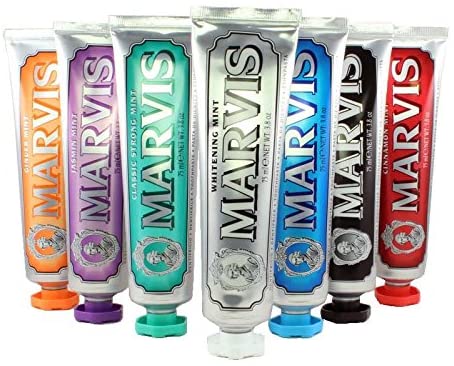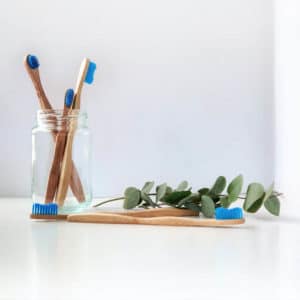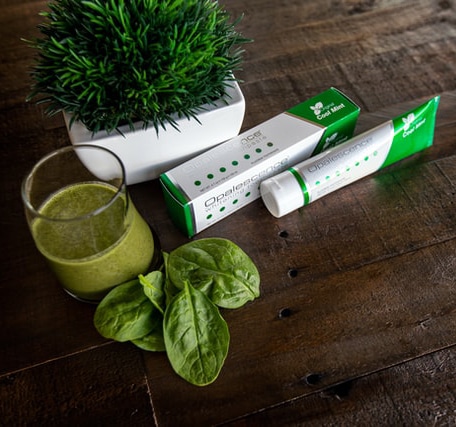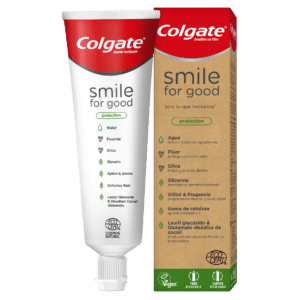Toothpaste: It's Now Instragram-able, But Will It Save Your Teeth?

Isn’t it incredible how we buy things we never knew we needed? With the help of eye-catching artwork and outstanding imagery, entire product ranges are birthing – with Instagram as midwife – despite the fact we don’t need them. From custom yoga mats to designer milk, suddenly, we can’t live without #latestnewthing.
Squeezing its way into the list now is toothpaste. Gorgeously packaged with exotic names, scintillating scents and skyrocketing pricetags, alas, most have no fluoride. But before you go shopping, here’s what you need to know.
Summary
- A new generation of mainly fluoride-free toothpaste have hit the market in the name of wellness, marketed predominantly through Instagram
- Our teeth need fluoride to prevent cavities – not a pretty package
- Fluoride is a natural mineral – so claims that trendy toothpastes are “free from nasties” (insinuating that fluoride is nasty) are not correct. “Chemical free” is misleading; everything is a chemical. Even water.
- If you want gorgeously packaged toothpaste, choose one with fluoride in it, such as Marvis. But don’t expect it to be the same price as your average supermarket toothpaste.
According to Bloomberg, the global toothpaste market was valued at US$26 billion in 2018 and is expected to reach US$36 billion by 2024. Yes, it’s a lot of money, and the rise is due partly to our global dental health crisis. People are eating too much sugar and losing their teeth. But don’t expect this market share to be monopolised by our previous big players. The wellness industry is desperate for a seat at what’s been a pretty boring table.
The wellness industry’s ‘natural’ problem
Filled with the greatest of intentions and stunning imagery, the wellness industry often fails to hit the mark. A lack of science education is often the culprit, with the biggest offenders being the phrases ‘all-natural’ and ‘chemical-free’. Let’s take a look at why.

ALL-NATURAL: ‘Natural’ sounds great, and nature can be a wonderful thing. But nature also produces earthquakes, cancer, arsenic, asbestos and cyanide. So there goes that argument. Many of these Insta-worthy brands display lovely pictures of freshly-cut herbs and healthy-looking ingredients like cinnamon, cloves and charcoal. Still, these may not be as effective as proven scientific formulas. (Charcoal is a shocker and to be avoided on teeth – it’s highly abrasive on tooth enamel).
CHEMICAL-FREE: ‘Chemical-free’ is a misnomer. Everything is a chemical. Dihydrogen monoxide sounds nasty until you find out it’s water.
Fear: the unacceptable marketing ingredient
Now that we’ve briefly looked at how ‘naturally’ and ‘chemical-free’ can be confusing let’s take a look at how information can be misconstrued.
Creator of new ‘natural’ fluoride-free toothpaste, Gem, Georgia Gemind boasts her background as an ex-model and marketer. Her toothpastes are very pretty – such a refreshing change after all that primary-coloured plastic in our cabinets! She says she’s a lover of “natural” products who was struck by “how many people diligently avoid putting chemicals on their face or spraying them across the kitchen bench but still regularly put them in their mouth on a toothbrush.”
But here lies the problem. Everything is a chemical. Arguably, she probably means “harmful chemicals”. But for a chemical to be harmful, it must be eaten, drunk or absorbed at toxic levels. Rest assured, if this were the case, your regular toothpaste wouldn’t be sold on supermarket shelves.
Although Gemind’s intentions may be good (and she is making dental hygiene attractive, which is great), she is confusing people into thinking that chemicals are bad and that her product contains no chemicals. Wrong and wrong!
A note on remineralisation. To her credit, again, Gemind has thought about the issue of remineralisation. To address this, she’s chosen a substance called hydroxyapatite in place of fluoride. Hydroxyapatite has some promising research behind it, according to Dr James Fernando – a dentist and tooth decay researcher from the University of Melbourne, but says “the few studies that exist are not robust.”
Are we just a bit bored?

But your new and pretty toothpaste might not do the job well, and it’s best not to mess with your dental health. Or your bank balance.
Italian toothpaste Marvis (containing fluoride) costs $15, Buly from France costs $35 while US brand Theodent cost $130. The Theodent website showcases pictures of beautiful back-to-nature rainforests and posh-looking bathrooms. Still, there’s no fluoride. You’re better off sticking to your supermarket variety and buying something else to cheer you up.
Why we need fluoride

Fluoride is a naturally occurring mineral found in soil and rocks, grains, vegetables, as well as fresh and saltwater. Ironically, it sounds positively ‘gram-able. Its been repeatedly tested and found to be safe for human use in the levels we have in toothpaste and drink in our tap water.
Fluoride is crucial in combating tooth decay as it helps to re-mineralised or seal our teeth. Think of it as a protective barrier. Without it, acids produced by bacteria feeding off sugar can more easily break down our tooth enamel.
Colgate has made the environmentally conscious move (currently promoted on Instagram) with an industry first vegan-approved fluoride toothpaste in a recyclable tube. So if you’re keen to do the right thing for the planet – and your teeth – you may like to give it a try.
What to look for in a toothpaste
- Choose a fluoride toothpaste – Australia’s peak dental body, the ADA recommends brushing teeth twice daily with fluoride toothpaste. If you have a little one under the age of 18 months, do not use fluoride toothpaste. Kids aged 18 months to 6 years should use low fluoride toothpaste. (This is because children gag reflexes are not good and they may ingest too much toothpaste. If fluoride toothpaste is spat out, the quantity ingested is harmless.)
- Select a toothpaste based on your needs – e.g., sensitive teeth, whitening formulas, flavour free or low foaming toothpaste are all available
- Choose (ideally) from the Australian Dental Association Seal of Approval range
- If you’re keen on saving the planet, look at emerging recyclable options
- Speak to your dentist – if unsure – have a chat to your dentist
On the bright side

While, as dentists, we can’t endorse toothpaste tabs,we’ve noticed that the brand Parla does have a formula which contains fluoride. Brushing your teeth with something is better than not brushing your teeth at all.
So if for some reason, you have a dramatic aversion to toothpaste or have a tricky teenager refusing to brush, a trendy, Instagram-worthy toothpaste is better than nothing. Still, if that’s the case, we’d highly recommend regular professional dental check, clean and fluoride treatment to re-memorise their teeth with fluoride.
Some of these toothpaste do make nice designer gifts – particularly if you want to get an unmotivated recipient enthused about daily brushing. Marvis, for example, is rather ‘marvellous’ and despite paying a lot more than supermarket brand toothpaste, it tastes terrific and contains fluoride. Hurrah! Don’t the Italians know how to get it right!
Speak to your dental professional
Now that oral care is receiving a “wellness industry makeover”, things are getting confusing. There’s plenty of prettiness, but many products aren’t up to scratch. On the bright side, though, some new products are looking good! DON’T listen to shop assistants or believe what you read on Instagram. Speak to your dentist. Show us the products you’re interested in – and let’s chat!


